This post may contain affiliate links. Please read our disclosure policy.
Here is a guide on how to use a cast iron skillet. Keep reading for advice on how to wash, season, store, and cook with the original, long-lasting multi-use pan. This advice applies to cast iron griddles, grill pans, and dutch ovens, too.
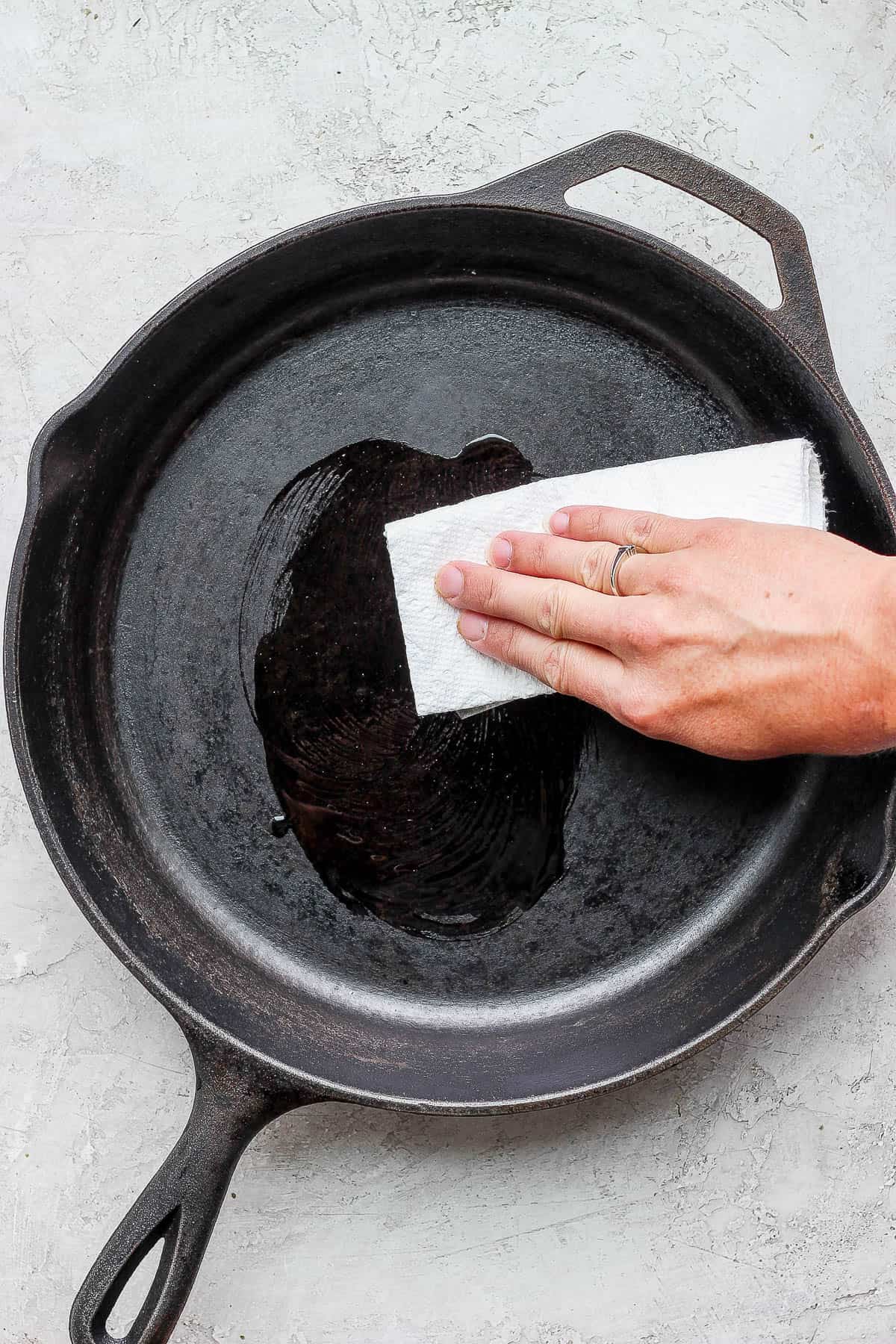
what is a cast iron skillet?
Cast iron cookware has been around for centuries – especially in Asia. Skillets today are made of iron with some carbon and silicon. Prized for durability, versatility, and a natural non-stick coating, cast iron cooks on any stove -gas, electric, induction – the grill, even the campfire.
seasoning a cast iron skillet
What does seasoning a cast iron skillet mean? How do you know if/when you need to season it? How do you season it if needed? These are key questions that you may wonder if you just bought a new skillet.
what does it mean to season a skillet?
Seasoning a cast iron skillet means coating the clean pan with a very thin layer of oil and then heating it. This process bonds the oil chemically to the pan creating a nonstick surface that keeps improving with cooking and care.
when do you need to season a skillet?
Your brand-new skillet probably came pre-seasoned and ready for cooking. Consult the manufacturer’s website for follow-up directions.
However, if you have an older pan with rust or you start to notice uneven seasoning when cooking, you will want to thoroughly wash your pan and re-season it.
how do you season a cast iron skillet?
- Clean the skillet if needed. You can clean your skillet with a sturdy brush, metal pad, or chain mail scrubber and some soap and water to thoroughly clean the pan ridding it of any rust and debris. Then dry completely and proceed as directed below.
- Apply oil. From flaxseed to grapeseed, every expert and manufacturer has their favorite oil. Generally, you will not go wrong choosing a polyunsaturated oil with a high heat point, like canola oil or basic cooking oil. Butter or olive oil will not work, though. Apply the oil in a very, very thin layer. Use a paper towel to coat the pan all over, but with a very, thin, barely-there layer.
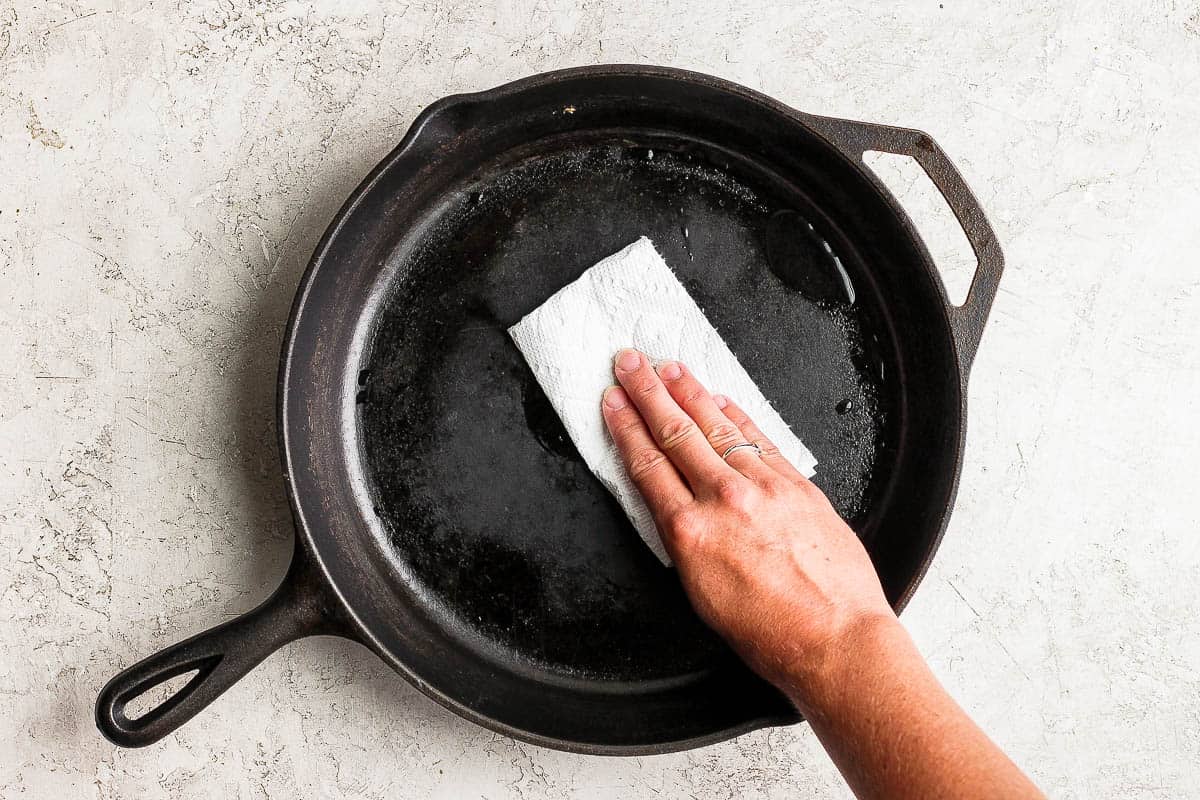
- Place the skillet in the oven. The recommended oven temperature is between 450°F and 500°F. Place the pan upside down on a rack and bake for one hour. Allow the pan to cool in the oven.
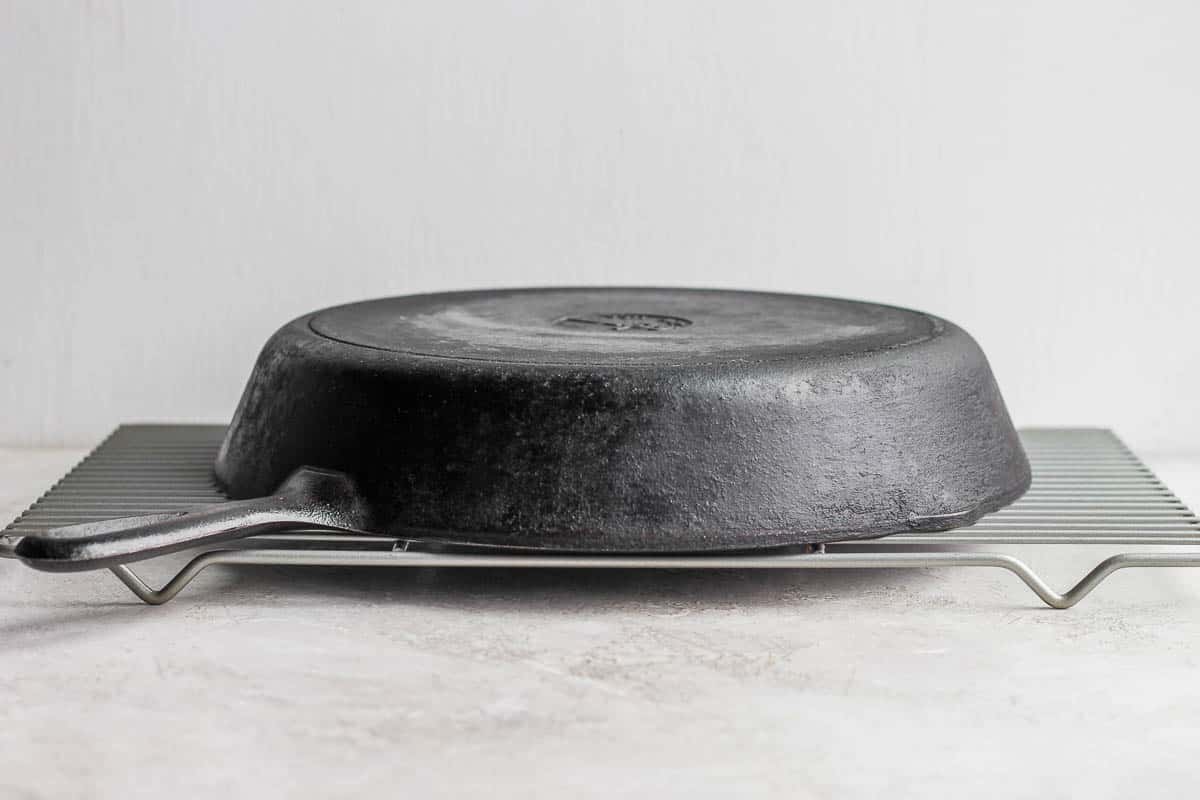
- Repeat as necessary. Some people like to coat and bake several times before they are satisfied with the finish.
- Cook something fatty: Cooking something very fatty – like a ribeye steak – in your newly seasoned pan right away to immediately build on the new seasoning.
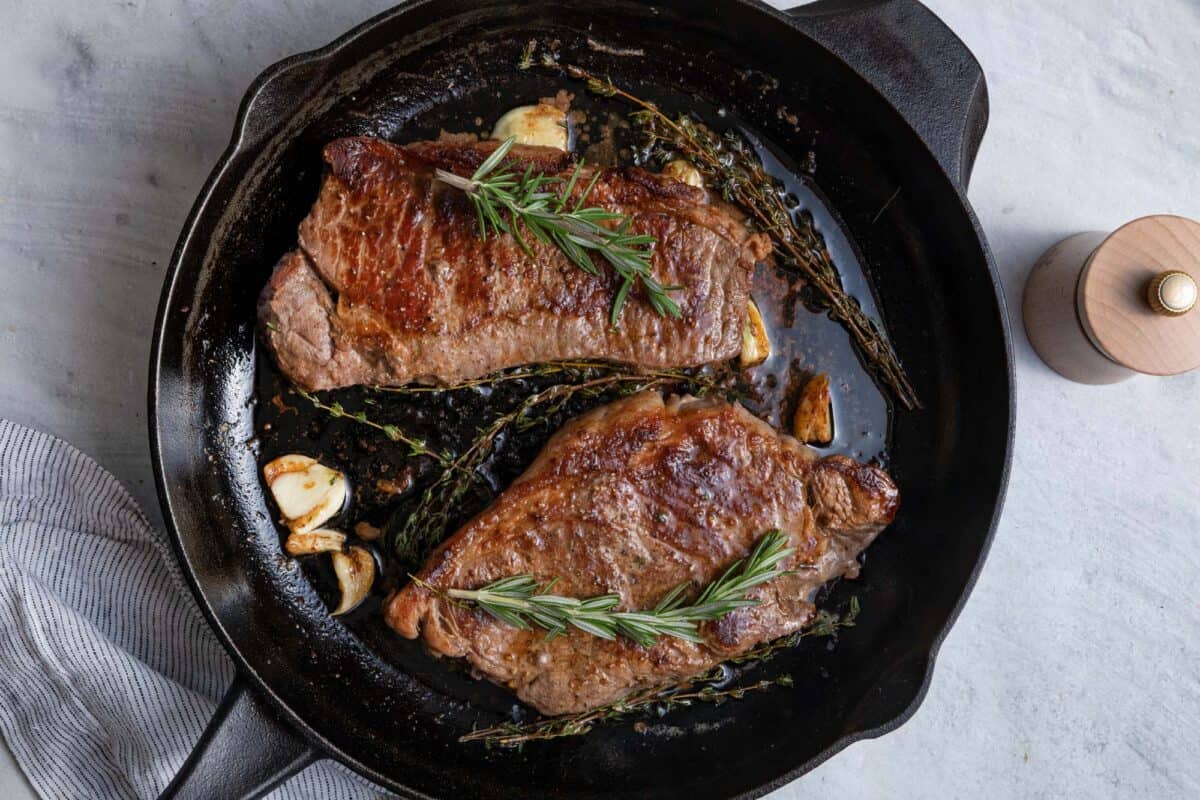
how to use a cast iron skillet
To get started cooking with your cast iron skillet, you’ll need to season it, which we discussed above. Once your skillet is seasoned, you can use it for cooking just about anything! To start cooking, just follow the simple steps below.
- Preheat your skillet. Place it on the stove over medium heat and let it preheat for about five minutes. This will help to prevent sticking and ensure that your food cooks evenly.
- Add oil to your skillet. Once hot, add a little oil to your skillet and spread it around with a paper towel. You do not need a lot – a light coating on the bottom of the pan is perfect.
- Add your food to the skillet. Now it’s time to add your food! Whether you’re cooking eggs, pancakes, or grilled cheese, just place your ingredients in the skillet and let them cook.
Not much, if any, different from using a regular pan, right? The key difference is that you need to preheat your cast iron skillet before adding oil. You want to wait until your pan is hot to add any type of grease. This will help to prevent sticking and ensure that your food cooks evenly.
Now that you know how to use a cast iron skillet let’s talk about some things you can cook in your cast iron skillet.
THINGS TO COOK IN YOUR CAST IRON SKILLET
- Sear steaks, lamb chops, chicken breasts, fish fillets, and other proteins.
- Campfire fare: Cast iron is heavy. It will not warp easily and is perfect for open-air cooking
- Deep-fried food: Cast iron’s ability to hold heat helps keep the oil temp steady, and the skillet’s weight anchors it to the stove, making it a safer vessel for boiling oil.
- Bake goodies: like focaccia, skillet cookies, apple crumble, one-pan deep-dish pizza, or French tart tatin.
- Make eggs: Fried, scrabbled, frittatas, or even Shakshuka. Once your pan is nicely seasoned, eggs are natural in your cast iron skillet
things not to cook in your cast iron skillet
- Long-simmered tomato sauces and other acidic things, like white wine, will affect the pan’s seasoning and take on a metallic taste. However, these ingredients are okay cooked for 30 minutes or less, according to tests done by America’s Test Kitchen.
- Eggs: Before your pan is well-seasoned and truly non-stick, avoid cooking things that are very sticky.
- Very delicate fish: Again, before your skillet is very well seasoned, very thin fillets may fall apart
- Sweets after savories: The porous nature of cast iron means it can absorb strong flavors like garlic or fish. So scrub thoroughly, perhaps with salt, if you plan on switching back and forth between sweets and savory. Or designate one skillet for each flavor.
how to clean your cast iron skillet
- Wash right after using. Do not allow your skillet to soak in water (or store cooked food in it.) Both cause rust. A tiny bit of dish soap is okay. Myths abound saying dish soap will ruin cast iron, but most manufacturers agree that for a well-seasoned pan, a tiny bit used sparingly will not hurt.
- Use kosher salt as a natural scrub to loosen any baked-on bits. Then rinse thoroughly with hot water. Scrubby brushes and textured pads are also good to use instead of kosher salt.
- Towel dry the skillet. Then, set it on the stove with the burner turned to low until all the water is dried off your skillet.
- Apply a thin layer of oil. Take a paper towel moistened with your oil of choice (see above) and wipe lightly on the skillet. Store in a dry place for next use.
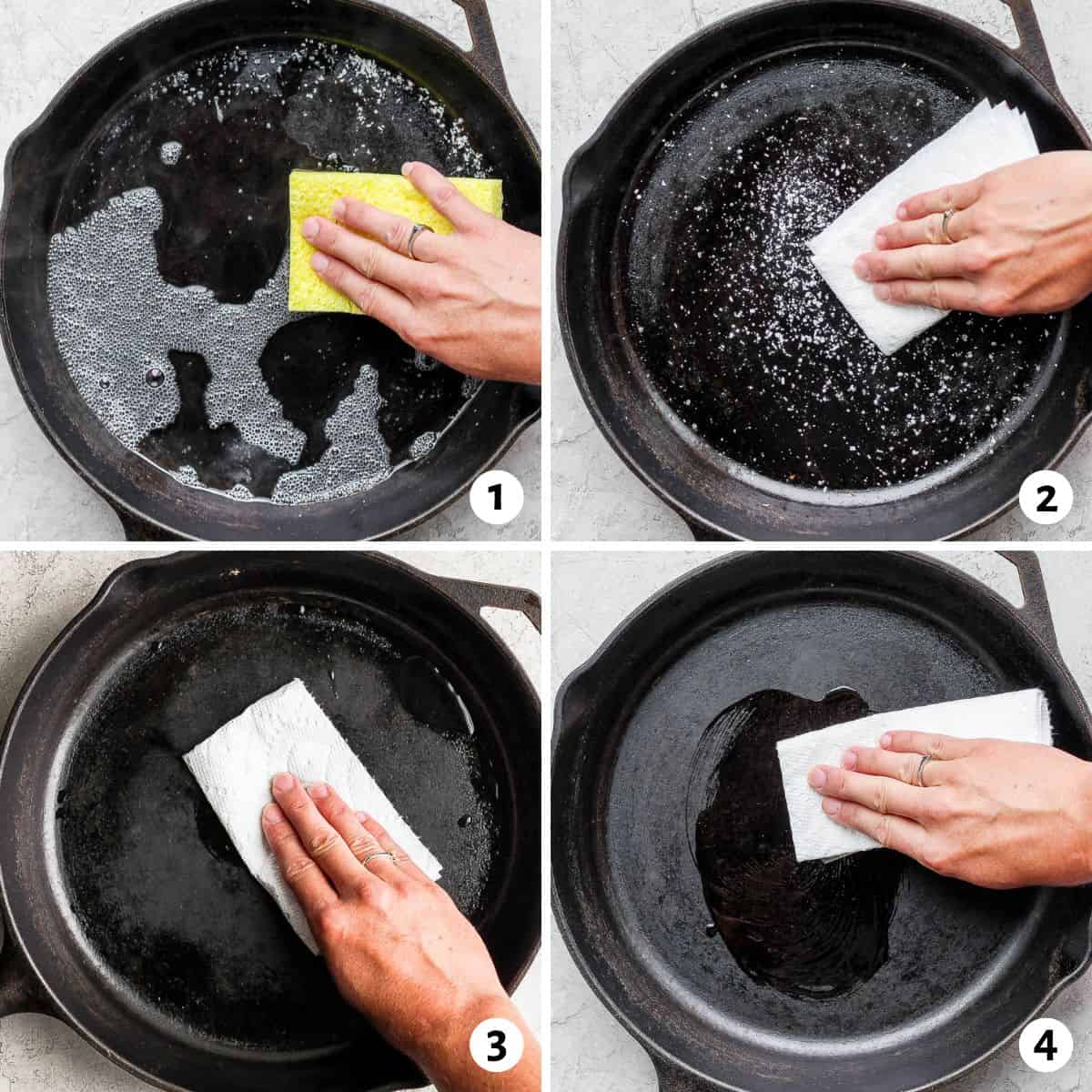
tips for storing your cast iron skillet
- Always make sure your skillet is totally dry and cool before storing it.
- Store in a dry place.
- Line the inside with paper towels to protect from moisture and scratches to the seasoned surface.
- Oven range storage drawers are great because the heat helps them stay dry.
- Use often! Frequent use keeps your pan seasoned and in good shape.
Cast Iron Cookware To Stock Up On
- 8in cast iron skillet
- 9in cast iron skillet
- 10in cast iron skillet
- 11in cast iron skillet
- 12in cast iron skillet
- Square cast iron griddle
- Rectangular cast iron griddle & grill
cast iron skillet recipes for beginners
- Cast Iron Pizza
- Cast Iron Skillet Steak
- Baked Lamb Chops
- Skillet Chicken with Couscous
- Easy Vegetable Frittata
- Green Shakshuka
- Shakshuka with Feta
- Whole Roasted Cauliflower
- Easy Skillet Shrimp Fajitas
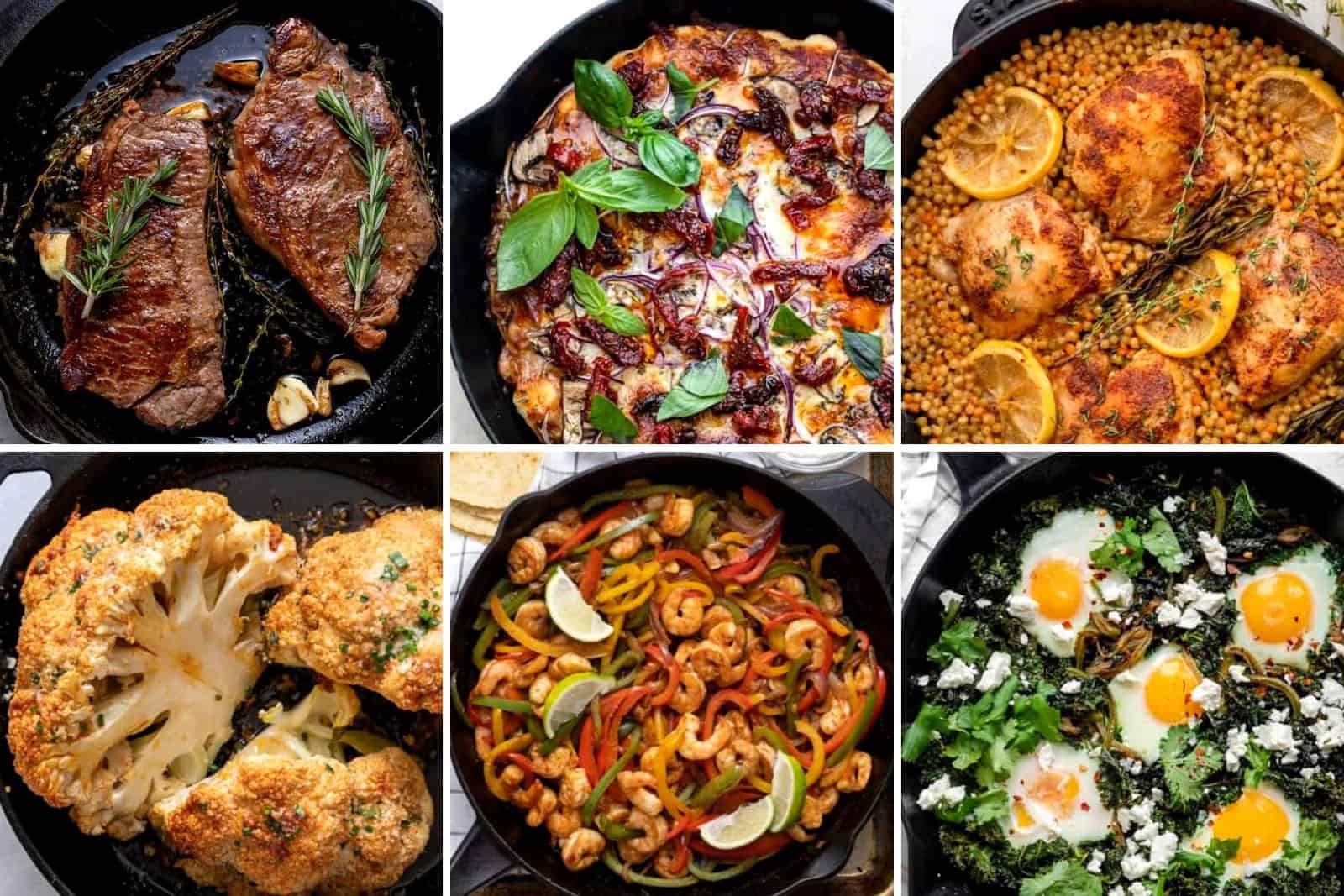
frequently asked questions
Sometimes the seasoning doesn’t bond completely or wears off. Scrub your skillet down with a wire pad, try to loosen everything you can, thoroughly dry, and re-season.
Yes and no. You don’t want to use it if you can see rust – but you can restore it and remove surface rust with a steel wool pad and some elbow grease. Once you get all the rust removed, wash it thoroughly and re-season it. Your skillet will be as good as new!
For baking, many recipes call for a 10″ skillet (for giant cookies) or smaller 8″ or 9″ ones for pies. If you’ll be roasting chickens or cooking for a crowd, try a 12″ skillet. Skillets are available at many different price points.
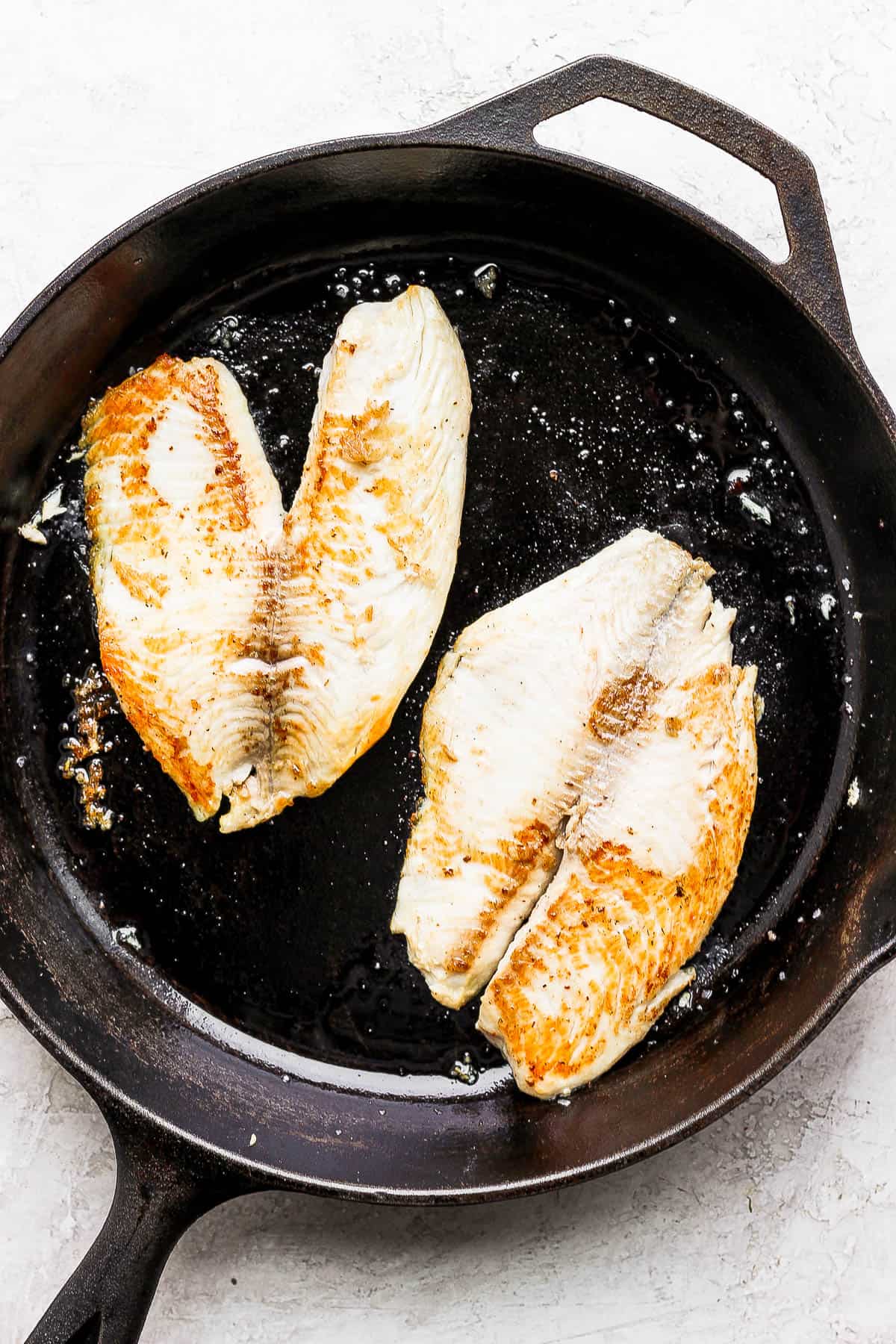
A cast iron skillet deserves a place in every kitchen. Even if it gets rusty, a good scrubbing and seasoning will bring it back for decades of more cooking.
More kitchen guidelines to check out
- How to Make Family-Friendly Freezer Meals
- How to Use an Instant Pot
- How to organize your fridge
- How to stock a freezer
- How to Stock a Pantry
- Tips for making mealtime delicious
- How to grill
- Instant Pot Guide
- Tips for Food Storage
- Steps to an Efficient, Organized Kitchen
- Kitchen Knives and Small Kitchen Appliances
If you find this Cast Iron Skillet Guide helpful, we’d love to hear from you! And if you snapped some shots of any of these tips and tricks, please share them on Instagram so we can repost on the Feel Good Foodie stories!






I’ve always been intimidated to use a cast iron skillet, but you were so clear and concise about the steps, that now I think I can do it! Thank you!
I only have one question regarding cooking after it’s been seasoned. You mentioned using a polyunsaturated oil to season the skillet. Does this also apply for the cooking? I ask because we normally use avocado or olive oil for our cooking and I want to make sure I continue to add a healthy layer of seasoning with my cooking. Hope that makes sense. Thanks in advance, Yumna!
No, you can feel free to use your oil of choice once the pan has been seasoned properly.
Got my first cast iron pan. You gave great information on how to season and care for your pans. Thank you.
So glad it was helpful!